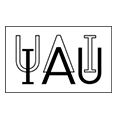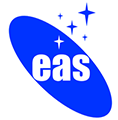4.5
The Orion Nebula: A chapter of early nebular studies
Tibor Herczeg, Norman
Abstract
It has been noticed repeatedly that Galileo, while carefully mapping the region of the Orion Belt, failed to recognize the great nebula around Theta Ori, announced much later (1659) by Huygens. Recently, an interesting possible explanation has been put forward (Th. G. Harrison) that the nebula was not there in 1610 and appeared only decades later due to an FU Ori-type flaring up of the illuminating stars. This hypothesis, however, becomes hardly tenable, since we know that the well known French »renaissance man« N.C. Fabryde Peiresc did see the nebula in the very same year 1610. We do not think that Galileo deliberately suppressed here a discovery, rather that he might have ignored an entirely unusual, indistinct and, for his instrument, at best marginally appearing phenomenon; this interpretation is close to that of A. von Humboldt's in his »Kosmos« (vol. 3). A survey of some early confusion concerning »nebulae«, »nebulosae«, »cumoli«, etc. amply supports this explanation.
We also mention the much discussed question of the variability of the Orion nebula and, as an instructive comparison, that of the Andromeda Nebula.
Bibliographical details:
Tibor Herczeg: The Orion Nebula: A chapter of early nebular studies. In: Peter Brosche, Wolfgang R. Dick, Oliver Schwarz, Roland Wielen (Eds.): The Message of the Angles - Astrometry from 1798 to 1998. Proceedings of the International Spring Meeting of the Astronomische Gesellschaft, Gotha, May 11-15, 1998. (Acta Historica Astronomiae ; 3). Thun ; Frankfurt am Main : Deutsch, 1998, p. 246-258.



